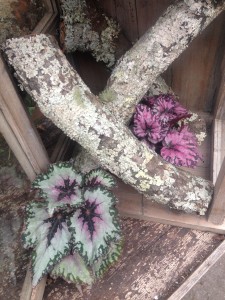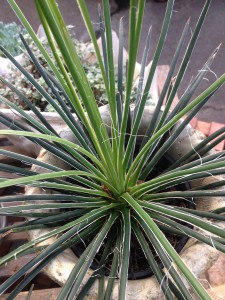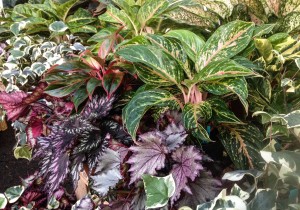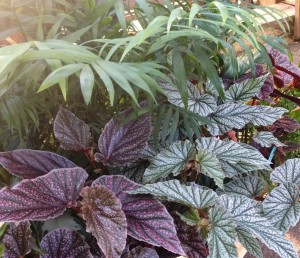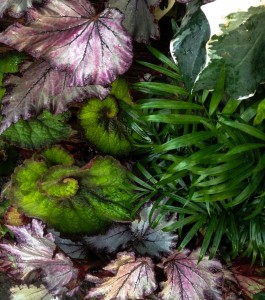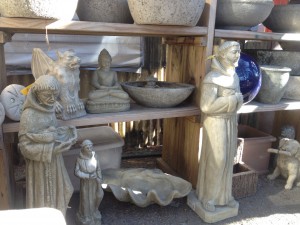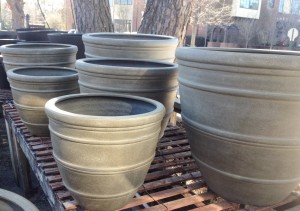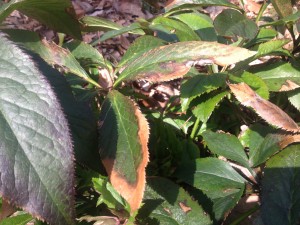
Winter damaged leaves of lenten roses…
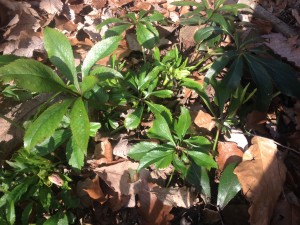
After clipping out old leaves…
The lenten roses, Helleborus orientalis, are beginning to bloom in my garden, and I bet yours are too. These sturdy and dependable perennials don’t need much help from us to survive, other than providing a shaded, well draining area.
If they’re happy they’ll slowly spread by seeding themselves. Their older leaves usually look rough by the end of winter, and this year with our exceptional cold mine look awful.
It’s very easy to remedy this, though, and they’ll look so much better! Simply take a little time one nice day and clip off all those large, old cold damaged leaves.
You’ll immediately begin to see all the small flower buds down low, and, depending on the weather, some may already be open. The trick is not doing this too early – those old leaves are also protecting the new growth and flower buds from any late winter frosts and freezes.

An epimedium bloom (Shown later in the spring.) There will be many of these on a mature clump…
Another evergreen blooming perennial you may not be familiar with and needs the same care, is epimedium. This early spring bloomer (there are many cultivars) has delicate flowers that can be overlooked if the old foliage isn’t clipped off. With this one it’s really important to clip of the old leaves before the delicate stems begin to come up through them.
If you wait too long it’s really difficult to do without inevitably cutting off the wiry flower stems. If you have a shade garden and don’t have epimedium, you’re missing out on one of the toughest perennials out there! Truly, it only looks delicate.
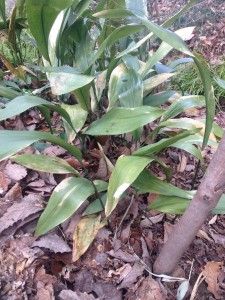
I’ll cut this clump to the ground…
Another many of you probably are familiar with is cast iron plant, or aspidistra. This is another workhorse evergreen shade perennial. Usually each spring I give a good tug to winter damaged leaves, pulling them right out, effectively thinning the clump a bit.
This year I’m going to cut whole clumps to the ground, since the majority of leaves show damage. With spring right around the corner, fresh, new growth will appear quickly. Doing all of these simple late winter tasks will ensure an even more beautiful garden as the weather warms….
Late February is traditionally the time to prune roses – some say to prune them on President’s Day, others say to tackle this chore when the forsythia blooms. Well, we’re past President’s Day, and my forsythia is blooming, but I haven’t quite gotten around to the roses yet…that will be next on my list!

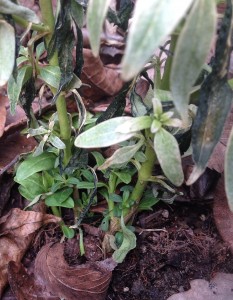
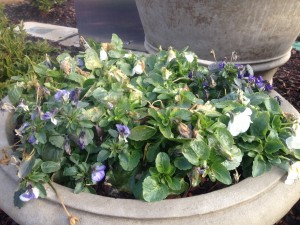
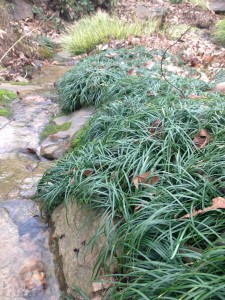
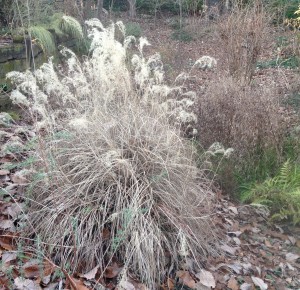
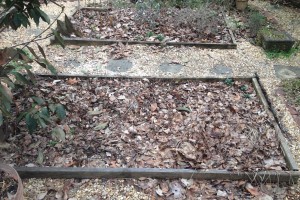
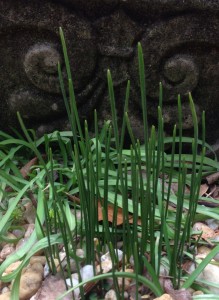
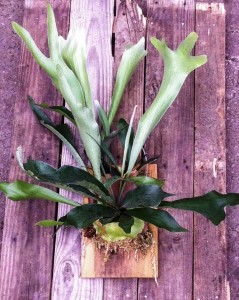
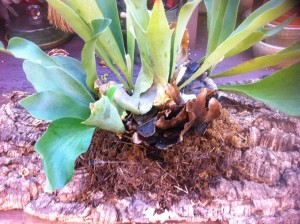
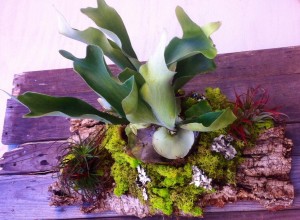
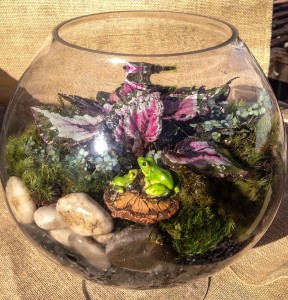
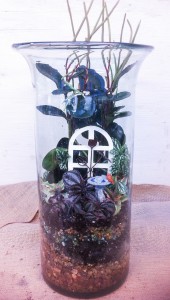
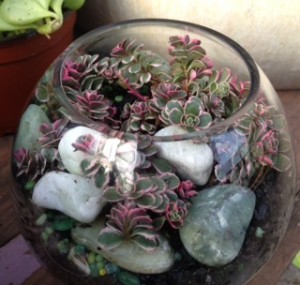
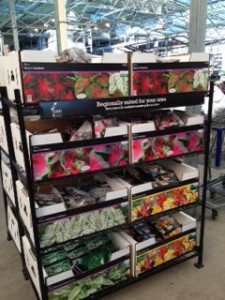 However, a friend recently sent a picture she took (mid January) of warm weather caladium bulbs that had been left outside on display racks for sale in freezing temperatures at one of the “big box” stores in town. Now, caladiums grown in pots are so heat loving we don’t even begin to carry them until late April – and advise people not to plant caladium bulbs in the ground until the soil is thoroughly warmed in May.
However, a friend recently sent a picture she took (mid January) of warm weather caladium bulbs that had been left outside on display racks for sale in freezing temperatures at one of the “big box” stores in town. Now, caladiums grown in pots are so heat loving we don’t even begin to carry them until late April – and advise people not to plant caladium bulbs in the ground until the soil is thoroughly warmed in May.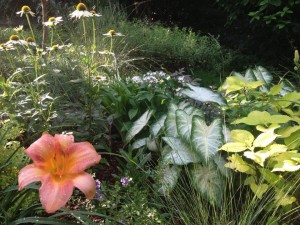
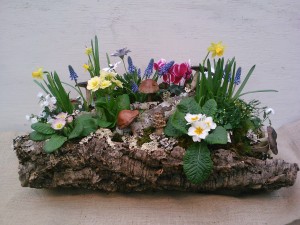
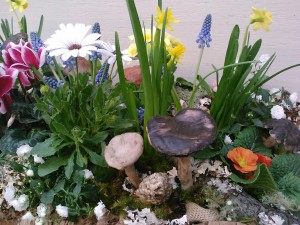 Now that January is behind us, we can look forward to spring, knowing it is right around the corner. Until then, we’ve been satisfying our planting urges using late winter offerings from growers. We are determined to come up with something interesting on long winter days in the greenhouse!
Now that January is behind us, we can look forward to spring, knowing it is right around the corner. Until then, we’ve been satisfying our planting urges using late winter offerings from growers. We are determined to come up with something interesting on long winter days in the greenhouse!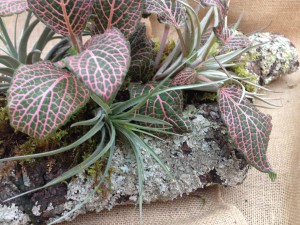
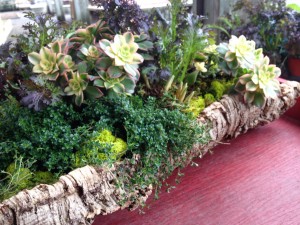
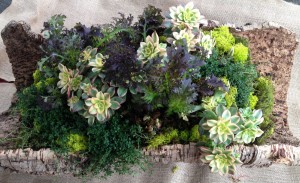 Many of the succulent aeoniums fare better here during the winter months. They seem to dislike our excessive summer humidity (Don’t we all?), and the Aeonium ‘Kiwi’ seemed just right to work into some sort of arrangement. I loved how they looked paired with this frilly dark purple leaf ornamental mustard. If I could just work it into a container that could be moved in and out easily if temperatures dropped below freezing…
Many of the succulent aeoniums fare better here during the winter months. They seem to dislike our excessive summer humidity (Don’t we all?), and the Aeonium ‘Kiwi’ seemed just right to work into some sort of arrangement. I loved how they looked paired with this frilly dark purple leaf ornamental mustard. If I could just work it into a container that could be moved in and out easily if temperatures dropped below freezing…